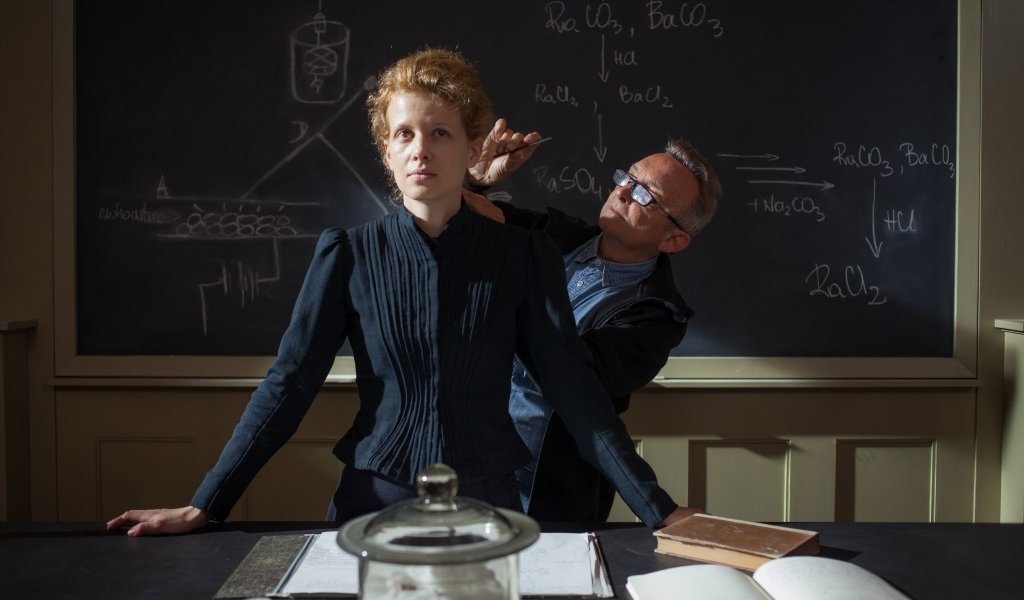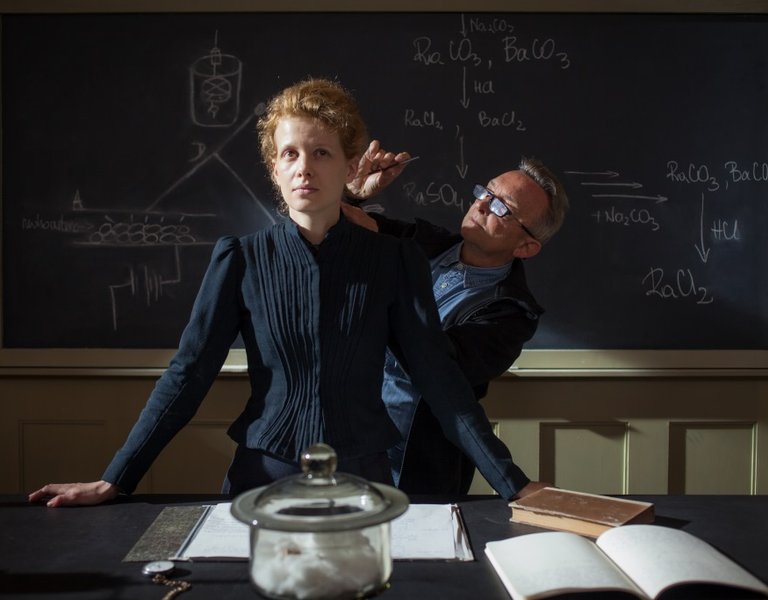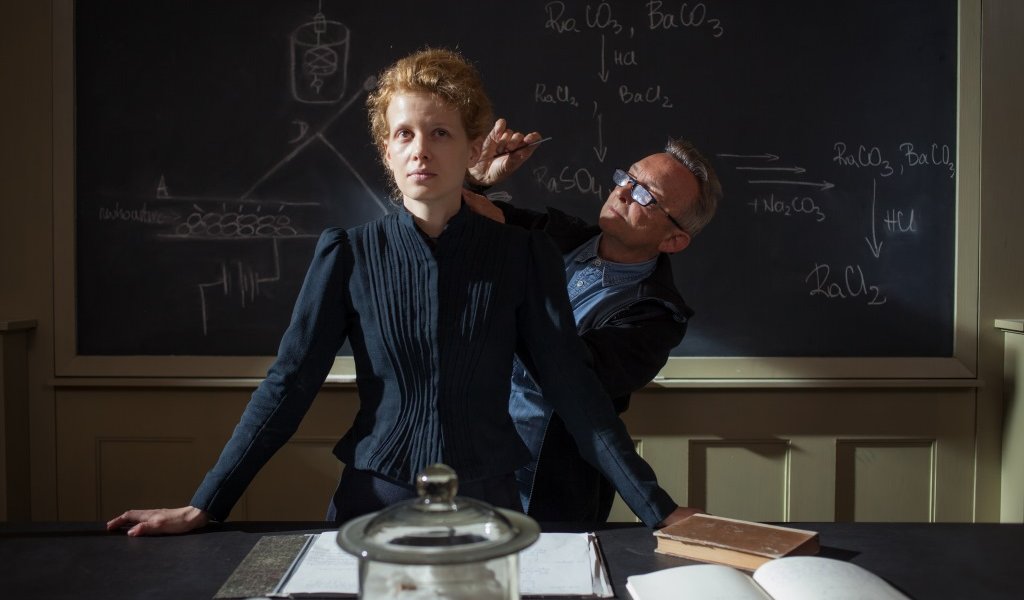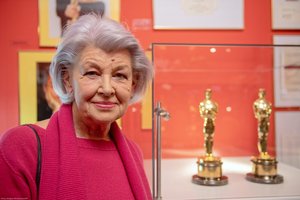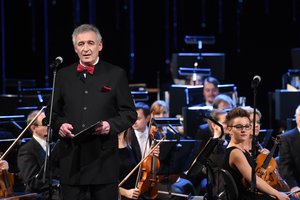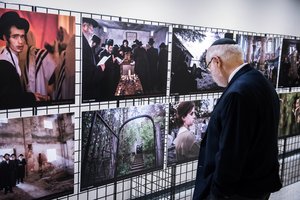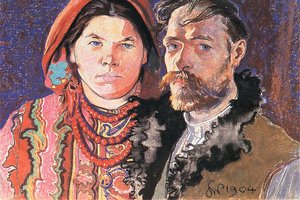Skłodowska-Curie on the big screen
An outstanding scientist striving to break the glass ceiling in science – but also an ordinary woman. This is the story of Maria Skłodowska-Curie told in a biographic film, which will be shown in cinemas in 2016.
Skłodowska-Curie is a film character like no other. Her biography is full of romance, sudden turns of fate and lucky coincidences. Had she not existed, it would have been really difficult to invent a character like her. It is a real treat not only for a scriptwriter and film set designer, who have access to her original notes, including recipes, that survived her.
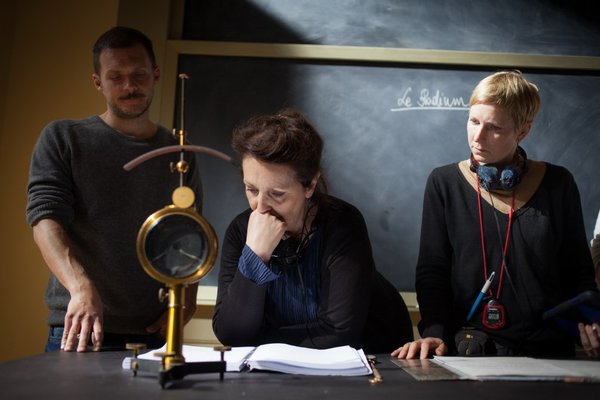
The “Marie Curie” film currently being produced as a Polish-French-Belgian-German cooperation sets out to tell the story of the discoverer of radium and polonium, the only Noble laureate in two categories, chemistry and physics, the first European woman with a PhD and professor title. It also portrays an ordinary woman – a wife and a mother. Skłodowska-Curie was no stranger to impulsive decisions. A lot of screen time is dedicated to her relationship with her husband, Pierre, a physicist and co-creator of the term “radioactivity”. After the death of her beloved husband she fell in love again - this time with the outstanding physicist Paul Langevin, a married man. Marie Noelle, the film's French director, explains that she wants to show “a person tormented by contradictions and dilemmas, but one that never lost sight of her objectives”.
So, the film not only tells a story of her heroic path to the Sorbonne that the impoverished Polish noblewoman had to follow, and how she earned her living as a governess after graduating secondary school with a golden medal, it also depicts an ambitious, driven and extremely intelligent woman born in Poland following the partitions, a woman willing to do anything to become a great scientist. And here she is. Marie Curie, as one of the few women in the history of the Sorbonne, graduated from the university in 1893 with a degree magna cum laude in physics, and a year later – in mathematics. She became the first woman professor in the history of Sorbonne.

This is why international media write about the “Marie Curie” film as a feminist picture telling the story of the first woman who tried to shatter the glass ceiling in the world of science. Marie Noelle experienced some of these feelings herself, as she studied mathematics, before moving on to directing. Today, a hundred years after she made her discoveries, Marie Curie still continues to be the subject of critical comments uttered by modern scientists. Tim Hunt, the British laureate of the Noble Prize in medicine (2001), recently said: “Three things happen when they (women) are in the lab: you fall in love with them, they fall in love with you, and when you criticise them – they cry. I'm really glad that Marie Curie stopped crying and found the time to discover radium and polonium.” His words cost him his position at the University College of London, yet he is not alone in his attitude. According to Marie Noelle, these attitudes might be responsible for the fact that, in Europe, while it is girls who are better in mathematics at school, only 13 percent of scientists working with the sciences are women.
About Marie Curie, Noelle says that she was a woman who proved that women can compete with men in the sciences, adding that “within a space of six years, she gave birth to a child, lost her beloved husband with whom she shared her passion for scientific research and fell in love again (with a married man) sparking a high-profile public scandal, and then she wins another Nobel to top it all off”. According to the film maker, such a colourful life deserves a full biographic film, which will be shown in cinemas all over the world.
Classic biographies are in vogue
“Marie Curie” is yet another film that aligns with current global trends, according to Krzysztof Kwiatkowski, a film journalist writing for the “Wprost” weekly and the “Wysokie Obcasy” magazine. International cinema is now dominated by biopic, a term used to describe classic biographies today. “Out of the five Oscar nominations for best actor this year, four of them went to actors who played real people. Lives of scientists provide a lot of fascinating material to work with – and to make biopics. This is why a lot of film makers reach for them, like the director of ‘The Theory of Everything” (2014), a story about the disabled physicist, Stephen Hawking, or the directors of the Polish “Bogowie” picture, a story about the cardiac surgeon, Zbigniew Religa, who performed the first successful heart transplant in Poland,” Krzysztof Kwiatkowski told Polska.pl. “People want to see biopics and to confront their beliefs about famous persons, in particular those from recent history, like Lech Wałęsa. We have this need to see our history on screen, to fill in the blanks,’ adds the journalist, who believes that Noelle’s film will be successful. According to him, even if the film is not appreciated at film festivals, it is sure to enjoy an extensive audience.
The “Marie Curie” film is being created by an international team. A French director works with a Polish camera operator Michał Englert, who is famous for his work with Małgorzata Szumowska’s film “Body/Ciało”. The costumes were created by the Belgian duo, Cristobal Pidre and Florence Scholtes. The stage design is the work of Eduard Krajewski (Germany), the music – of Bruno Coulais (France), and Waldemar Prokomski and Mira Wojtczak, the make-up artists, are from Poland. The main roles are played by Karolina Gruszka (Marie) and Izabela Kuna (Bronisława, Marie’s sister). Piotr Głowacki will play Einstein, and the world-famous Daniel Olbrychski – Emile Amagat, Skłodowska-Curie’s antagonist. Pierre Currie will be played by Charles Berling, and Paul Langevin, Marie's lover after the death of her husband – by Fabrizio Rongione.
Pokromski Studio will produce the film, accompanied by co-producers: Sepia Production (France), P’Artisan Filmproduktion (Germany) and Climax Films (Belgium). The project was supported by the Polish Film Institute with a grant of PLN 2 million. The film was shot in Poland (in Łódź), in Berlin, Munich and Paris.
KAROLINA KOWALSKA
11.12.2015
